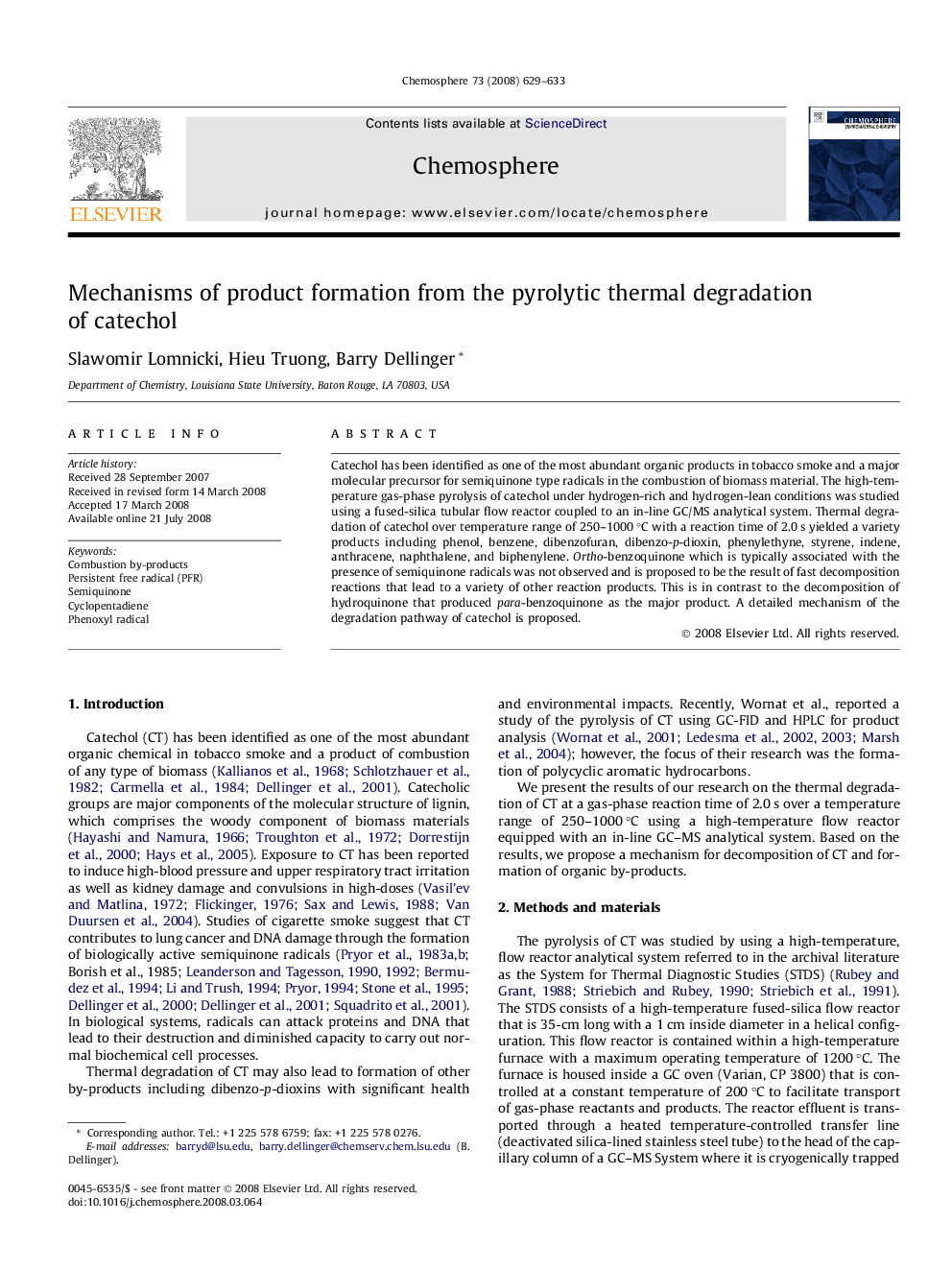| Article ID | Journal | Published Year | Pages | File Type |
|---|---|---|---|---|
| 4413335 | Chemosphere | 2008 | 5 Pages |
Catechol has been identified as one of the most abundant organic products in tobacco smoke and a major molecular precursor for semiquinone type radicals in the combustion of biomass material. The high-temperature gas-phase pyrolysis of catechol under hydrogen-rich and hydrogen-lean conditions was studied using a fused-silica tubular flow reactor coupled to an in-line GC/MS analytical system. Thermal degradation of catechol over temperature range of 250–1000 °C with a reaction time of 2.0 s yielded a variety products including phenol, benzene, dibenzofuran, dibenzo-p-dioxin, phenylethyne, styrene, indene, anthracene, naphthalene, and biphenylene. Ortho-benzoquinone which is typically associated with the presence of semiquinone radicals was not observed and is proposed to be the result of fast decomposition reactions that lead to a variety of other reaction products. This is in contrast to the decomposition of hydroquinone that produced para-benzoquinone as the major product. A detailed mechanism of the degradation pathway of catechol is proposed.
